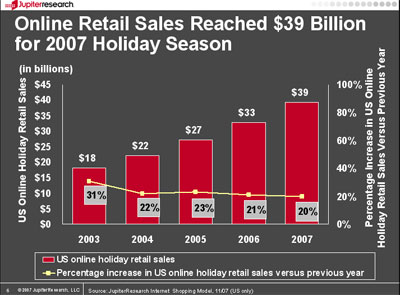Social Media Marketing Summit: Keynote 2 Shel Israel
I’m going to attempt to post this RIGHT after it’s done, so as I’m typing Shel Israel is talking. Don’t worry about not being rude. I have an uncanny knack of being able to type without looking at the screen. Nifty, huh? I digress, this presentation was given by:
- Shel Israel, writer, GlobalNeighbourhoods.net
 Shel took most of the presentation to talk about people he’d interviewed. Some of the anecdotes were useful and some were just that – anecdotes. I only outlined some of the more interesting ones for you that might have some take-home value.
Shel took most of the presentation to talk about people he’d interviewed. Some of the anecdotes were useful and some were just that – anecdotes. I only outlined some of the more interesting ones for you that might have some take-home value.
Bullet Point Review!
- Has been following social media since 2005, taking a business look at human stories.
- He gets paid to interview people about social media & how it impacts their business and culture.
- Whether you want to or not, social media is where it’s going.
- The internet came and gave us email, but it wasn’t as conversational as social media.
- The growth of social media has been more phenomenal than people realize.
- When they started their book in March 2005, there were about 4 million bloggers worldwide, not that impressive. If you add up all the social media content now you get close to half a billion people. And growing.
- There are great tools to find the conversation – Google Alerts, Radian6, Google Analytics.
- Since starting his project, he’s done 110 interviews, 33 countries, 5 continents (mostly bloggers).
- 2 billion people will be online by 2011.
- Michael Dell, Dell Computers.
- Dell might just be the world’s most prolific social media company.
- Conversations are more valuable than ads.
- Engagement beats impressions.
- Laurel Papworth, social networking strategies.
- Was invited to help set up a social network for Saudi women. Shel Israel asked her ‘what are they like’ and she said ‘they’re like all women’.
- They need anonymity online to avoid real world repercussions and need to support each other.
- Queen Rania of Jordan is on YouTube with near 4 million visitors doing almost daily posts & talks about the myths about Muslim women.
- Isaac Mao, China’s first blogger.
- The rate of growth for Twitter and Facebook seems to be higher than blogging in China.
- The Chinese blogging community has figured out how to bypass firewalls to publish outside of China through use of IPs, etc.
- Feeds the collective power of crowds.
- People’s voices will be heard – they are going to use these tools to have the conversations they used to have at the water cooler and now it’s amplified and can travel around the world very fast.
- Sun Microsystems is using a behind the firewall internal social network to collaborate and get products to market faster.
- Youth is the killer app. Its driving everything because social media is coming second nature to the upcoming workers of the world.
- Tools are allowing people to interact online much like they already interact offline.
- People are the same. Cultures differ.
- Useful info > pitches.
- Community now has the power.
- Generosity is competitively lethal.
- Adoption is faster than you think.
- Scalability is the new ROI.
- Measurement is being resolved. This is what people are super focused on this year.
- Using social media in a recession: it’s the most cost-effective option for communications with customers.
- 1 person can scale worldwide very quickly.
Points brought up during the Shel Israel Q&A
 What would you have in your shopping cart for low cost options? He hasn’t a clue – when he started, it was just blogging, but now there’s a powerhouse of tools. Where are your customers? What tools are you the most comfortable with? There are basic tools, but you may be better with one over another so you have to decide.
What would you have in your shopping cart for low cost options? He hasn’t a clue – when he started, it was just blogging, but now there’s a powerhouse of tools. Where are your customers? What tools are you the most comfortable with? There are basic tools, but you may be better with one over another so you have to decide.- Is there anything going on within the political campaign use of social media that businesses can learn from? They’re using incredible intelligence gathering tools and this is the first presidential election in history where social media is playing a role. Looking back during the next election will be interesting. This is a big step in a revolutionary process. People’s voices are being amplified.
Overall a good presentation, well done, with valuable case studies and a few ace takeaways. This is the first time I’ve heard Shel Israel speak, so it was a great opportunity that I hope to repeat at future conferences. There wasn’t much time for questions, but I get the impression that the questions would have gone on into generally tangential directions, so perhaps it was for the best.
Read MoreSocial Media: The Marketing Summit Day 1
Day 1 has concluded with some great after hours discussion for the Social Media: The Marketing Summit at Moscone Center West in San Francisco, presented by mThink. A day full of good pannels on various aspects of social media, including the panel with myself, Brian Caldwell, and Celine Takatsuno on the affiliate channel and how social media applies.
Unfortunately due to some public transportation issues, I didn’t make it on time for the first half of today’s keynote by Charlene Li of Altimiter Group, co-author of Groundswell. What I did hear was some key insight, and I look forward to finding some notes on fellow attendee’s blogs!
Brian Solis delivered with some great words of wisdom that were highly sought after (the slides of them, anyway) after the session. He had some really good actionable items in terms of creating a social media plan and allocating time and efforts that the attendees were really intrigued by. I definitely want a copy to assist with my own understanding of social media planning!
I met with my co-panelists through the Ticketmaster brand highlight so unfortunately I missed that talk, then noshed, then came our panel. I thought we did pretty well, and for my first more traditional speaking engagement. I got some good feedback on the panel, including some nice tweets:
@shelisreal – @briancaldwell, Celine Takatsuno & Trisha Fawver are talking about SM & affiliate mktng. Not my fav topic, but these guys are pretty good.
@lornali – @briancaldwell with Trisha Fawver & Celine Takatsuno on social media & affiliate marketing
@TTaxChristine – @TrishaLyn enjoying your discussion of the tie between affiliates and social media. #SMMW08
After our panel were the fellows from Best Buy responsible for their internal social network Blue Shirt Nation, who were a blast to hear from. There was also a panel on segmentation that I didn’t actually think was that great, and finally a presentation by Karl Long from Nokia on making your customers work for you using social media – great stuff.
Of course, i’ll post my notes as always in coming posts, but I’m jazzed to attend tomorrow’s sessions and soak up the social media goodness like a sponge!
Read MoreCJU Course: Exploring Affiliate Marketing Opportunities
I promised more from CJU, and more I shall deliver! This was an informative session, mostly featuring a lot of analytic and numbers supplied by Jupiter Research. The speaker was:
- Patti Freeman-Evans, Research Director & Senior Analyst, Jupiter Research.
Kind of dry, but had some good information.
Bullet Point Review!
- Affiliate marketing will have to change and adapt with the general economic conditions.
- Weak dollar, housing value declining, tighter credit markets, rising retail prices, possible inflation.
- It’s a slow process for consumers to come back.
- Online retailing up 15% in 2008 (estimated).
- Online retail has been doing well, but starting to slow from economic down turn.
- Online buyer much more affluent than offline shopper.
- Online still going up because people don’t want to drive.
- 30% of consumers believe that they can get a better deal online.
- 36% of offline sales are influenced by online research.
- Expected to raise to 50% by 2012.
- 2008 – 6% of total US retail sales made online.
- More people looking for financial services online.
- Online retail sales reached $39 billion for 2007 holidays.
- Many CEO’s of multichannel retailers looking for growth.
- Expect a lot of free shipping offers, discounts, coupons, etc.
- Increase in number of people looking for free shipping online.
- Worth looking at ROI, but doesn’t necessarily create incremental sales.
- Harder to turn that free shipping/discount customer into a full price customer later on.
- Online ad spend is 1/10 of total ad spend.
- Printed ads are lagging in performance and are expensive.
- Merchants are looking for cost-effective alternatives in advertising.
- The pace of display ad growth is faster than, but no bigger than, search.
- Mostly due to advancements in targeting.
- Better value for the money.
- Seeing growth in new media experimentation.
- Advertisers prepare for rich media & video, less static banners & text.
- Affiliates are the ones taking the risk on the sale.
- 13% compound annual growth rate – $2.1 billion.
- Affiliate industry is growing at ~9%.
- Publishers need to be relevant!
- Never underestimate the ignorance of the government regarding the internet.
- Other states are looking at the NY Tax issue and to the online area for taxation over the next 18 months.
- By 2012, 51% of online shoppers will be female.
- By 2012, 56% will be over the age of 35.
- By 2012, 41% will have an annual income of $75k+.
- By 2012, 69% will be Caucasian.
- Now – online shoppers are affluent & Caucasian, split evenly between male and female.
- Don’t concern yourself too much about other languages now as most online shopping is done by English speaking individuals.
- Consumers are making fewer decisions before getting online to buy.
- Only 31% known the item they want before hand.
- Search in research process has grown.
- Fundamentally, social media is influencing decisions by way of reviews, but otherwise not having a large effect.
- Consumers are more likely to start the buying process at the retail site they want to purchase from.
- Over time there could be a paradigm shift to social media.
- Online buyers go to three sites on average during the buying process.
- Google increases solidifies it’s dominant position as top traffic source for most retail sites.
- Why do people go to other sites?
- 71% : To see other prices
- 41%: Like to shop around
- 29%: Looking for free shipping
- 29%: Looking for more product information
- 23%: To get a sense of what other people said about the product
- 23%: To check other sites offers
- 23%: To see expert reviews
- 21%: To validate product information already found
- Put what the people are searching for on your site so they don’t have to leave (i.e. include reviews, comparison pricing, product info, etc).
- Consumers trust reviews, spend more on those products, and become loyal.
- 69%: Impulse buyers
- 60%: Brand advocates
- 60%: Loyalist
- 52%: Directed buyers
- 48%: Overall online users
- Learn from reviews to create communication strategy.
- On average consumers come back to the site 2.5 times.
- About 20% of online retailers include “Recently viewed products” to try to cross sell other things the consumer already looked at (Amazon is the best example).
- Loyalists are not as profitable as customers (they’re just as likely to abandon in favor of a lower price).
- Use direct customer input to set achievable buyer expectations.
- About 60% of online retailers have persistent carts (i.e. when you leave the site & come back, the items are still in your cart or gives you the option to save items for a later purchase).
- The sooner you can give the customer information on incidental feels (shipping, handling, processing, etc) the better.
There was no time for any questions from the audience because it was so JAM PACKED with data and information. Every slide Patti shared had great graphics, which was kind of hard to concentrate on, but great for any data and analytic nuts that want to see concrete research represented in lovely chart format. I know this definitely inspired me to learn more about perfecting charts within Excel! Great stuff overall for affiliate managers and online marketers alike.
Read MoreBlogWorldExpo 08: Making Money Online with a Blog
This was also commonly referred to as the “Super Bloggers” panel. The members consisted, in total, of:
- Jim Kukral, JimKukral.com (Moderator)
- John Chow, JohnChow.com
- Zac Johnson, ZacJohnson.com
- Darren Rowse, ProBlogger.net
- Brian Clark, CopyBlogger.com
- Jeremy Schoemaker, Shoemoney.com
Jeremy was late due to some quality Vegas partying, but once he did arrive he had some quality things to say. They all did, really, but I especially enjoyed Darren & Brian’s takes as I had never heard them speak before and I’d heard John & Zac.
Bullet Point Review!
- Jim asked what their number #1 money maker on their blog was:
- John Chow: Switching from an ad network to direct advertising sales using the OIO Publisher Direct plugin.
- Zac Johnson: Direct ad sales
- Darren Rowse: Recommended affiliate products.
- Brian Clark: Launching a membership site & selling WordPress themes.
- Selling any old crap decreases content value; sell things you actually believe in.
- Bloggers just want to write, not sell, so plugins are useful.
- Write about something that’s interesting or else it’s not sustainable.
- Revenue: 1. Direct Ad Sales 2. Affiliate Programs 3. AdSense.
- BC: Selling things (information, membership, etc) instead of advertising makes more money.
- A couple of years ago readers would complain about ads, but now they’re accepted as par for the course.
- The amount of money to be made in “non-sexy” niches is ridiculous.
- Start with what your readers want to buy, not what you want to sell.
- Offer incentives to sign up for your newsletter – 3x the money to be made with subscriptions.
- Newsletters vs. RSS – it’s way more beneficial to get people onto your email list.
- Aweber – BlogBroadcast tools count is included in RSS subscribers & sends an automatic newsletter with your blog posts.
- Many people still have no idea what RSS is, so offer delivery by email too.
- Blogs don’t have to look monetized.
- Sell yourself using consulting.
Points brought up during the Q&A
- Wait until 100 or 1000 readers to bother displaying RSS numbers on the blog.
- RSS subscriber count is powerful for branding and can be factored into ad prices.
- JC: Rule of thumb when setting an ad price – what is the ECPM for that same spot on an ad network? Double that. Offer the ad to run for a month at a time or a quarter, depending on price.
- Condense your header – big headers take up valuable space.
- How much traffic do they see through search? DR sees about 40% to ProBlogger and 60% to Digital Photography School.
- Chitika is a good ad network with powerful blog widgets for contextual, relevant ads.
- Write for your users, not Google. Search traffic is just a bonus.
- It’s a tricky line to keep your editorial integrity and still sell stuff, so don’t sell willy-nilly.
- Build a business – get repeat customers, loyal readers.
- What percentage of the time do they work? A LOT – you have to bust your ass, this isn’t a get rich quick scheme.
- Always look deeply at a product & only recommend valuable things.
- Announce it
- Talk about the product info, merchant or manufacturers information.
- Share testimonials of readers.
- Review your experience with it.
- Credibility is key with sharing information.
- Endorse, review products.
- Sell advertising in newsletters, lots of merchants love that.
- Establish yourself as an expert.
- Remember that Teaching Sells!
This was a very informative panel, and a great way to kick off the sessions. The room was packed, and I especially liked Jim’s approach to using Twitter to get questions for the audience. With a tech set crowd like bloggers, it was highly effective and a great panel for sure.
Read MoreMe, Director of Affiliate Marketing?
 Yep, that’s right. As of last week I’ve resigned from PsPrint and I’m now the Director of Affiliate Marketing with New Edge Media, an awesome media agency out of Dallas, TX. I was recently in Dallas right after attending CJU and Blog World Expo to meet some coworkers, get set up, and get the ball rolling on our projects.
Yep, that’s right. As of last week I’ve resigned from PsPrint and I’m now the Director of Affiliate Marketing with New Edge Media, an awesome media agency out of Dallas, TX. I was recently in Dallas right after attending CJU and Blog World Expo to meet some coworkers, get set up, and get the ball rolling on our projects.
I’d point you to the website for my excellent new employer, however they’re so busy working their tails off for clients that the site isn’t ready yet! So for now you’ll just have to take my word that we rock :).
Dallas was a great new experience, as I’d only ever touched down in Texas on layovers on my way to the East coast. I’m so glad that I rented a car and opted for the Garmin navigational device – it was very cool to drive around the city after work was over just exploring and seeing what there was to see. I did have my very awesome boss Brandy drive me through the infamous Grassy Knoll where JFK was assassinated…it’s fairly unimpressive for such a significant place. There is a modest plaque on the ground inset into the grass, but she had to shut up my rambles before I missed that we were driving through.
So I tell you this, dear reader, so you’ll perhaps forgive me for slacking on my reports from CJU and Blog World Expo. I’ll get on that right away, if you’ll have me 🙂
Read MoreCJU Course: 7 Keys to a Stellar Landing Page
 I was excited for this panel, which promised some great information on how to perk up your landing pages. The speaker was:
I was excited for this panel, which promised some great information on how to perk up your landing pages. The speaker was:
- Olivier Chaine, CEO & Founder, magnify360.
Bullet Point Review!
- Software-as-a-service delivers different landing pages to different visitors.
- Personal based development is growing.
- One experience, “the best” experience doesn’t work for everyone.
- Why do people abandon?
- Intent mismatch: their intent when finding your site doesn’t match what your site delivers (i.e. their intent is research and you have buy links but no reviews, or their intent is to buy and you have reviews but no purchase links).
- Personality mismatch: they just don’t jive with your site.
- Visual design/ease of use: pretty isn’t always the best, you want it to be functional and branded first and foremost.
- Product/Pricing perception: you must understand shopper personality types to sell to the different types of consumers.
- Reinforce Banner/Ad Message.
- Support ad copy; must have direct correlation.
- Image copy can match too.
- Have a strong call-to-action.
- Optimize header & call to action copy.
- Don’t forget the button copy.
- Variation in page flow.
- Form/copy split up.
- Can generate 30-50% lift by splitting form questions into multiple pages.
- Mobile.
- People on their phones have a different intent; may not be ready to buy over the mobile net.
- If they do want to make the purchase they are fast and very transaction oriented.
- Target Behaviorally.
- Look at the profile performance.
- Check weekend performance vs. weekday performance.
- Check branded landing pages vs. non-branded pages.
- Target multiple personalities.
- Look at buying process, purchase attitudes, industry knowledge, learning style, purchase criteria, buyer readiness.
- Design for the customer.
- Why are they here TODAY?
- How do they THINK?
- How do they BUY/STICK?
- What kind of DIALOG is best to have with them?
- TEST, TEST, TEST!
- Use manual testing & improvement.
- AB & Multivariate testing.
- Behavioral targeting & optimization.
Points brought up during the Q&A
- Start page variation by removing elements or large ad copy chunks & seeing what happens.
- Try completely different designs entirely.
- Making changes to landing pages allows you to buy more traffic & still be profitable.
- 25% conversion rate increase can mean a 75% volume increase, which means more buying power.
- Start small with behavioral targeting.
- Test often, measure always.
- Work with your sales and customer service departments to optimize.
- Find the right technology partners.
- Have fun & remember that this is about engaging with people.
- What to ask an agency before hiring them?
- Do they optimize manually or automatically?
- Do they focus on small elements or full pages?
- Do they do behavioral targeting?
- What kind of reports & analytics do they have?
- Are they a full service agency?
- Do they have any performance guarantees?
I really learned a lot from this session since I’m not entirely familar with landing pages. This really got me jazzed to apply what I’ve learned the next time I need to assist on a landing page design or even if I have to make one myself! I might even try to do a landing page for something to excercise this new knowledge.
Read More

